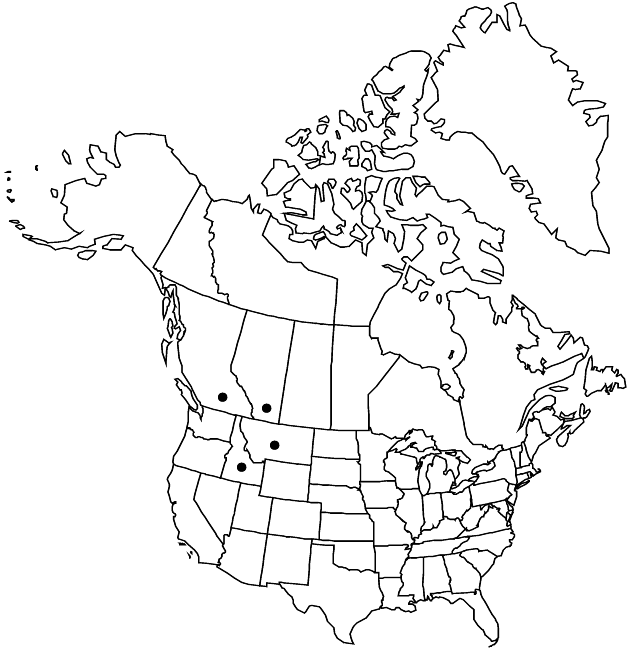Prenanthes sagittata
in J. M. Coulter and A. Nelson, New Man. Bot. Centr. Rocky Mt., 592. 1909.
Plants 8–75 cm; taproots short, thick and tuberous or long and slender, fascicled. Stems erect, greenish and mottled purplish, ± glabrous or proximally glabrate, distally glabrous. Leaves: proximal present at flowering; petiolate (petioles narrowly winged, sometimes lobed, 5–15 cm); blades ovate or deltate, 3–10 × 1.5–6 cm, thin, bases hastate to truncate or rounded, sometimes shallowly, palmately lobed, ultimate margins irregularly dentate, faces glabrous; distal reduced. Heads in narrow, elongate paniculiform or racemiform arrays. Calyculi 5–7, green, subulate to narrowly lanceolate bractlets 3–8 mm (longest 2/3 lengths of phyllaries), glabrous. Involucres narrowly campanulate (rounded), 7–13 × 5–8 mm. Phyllaries 7–12, green to tan, apices dark, linear-lanceolate, 8–12 mm, margins narrowly scarious, (apices sparsely ciliate), faces glabrous. Florets 10–19; corollas white, 9–15 mm. Cypselae brown, fusiform to oblanceoloid, subterete or angled, 5 mm, indistinctly 7–10-ribbed; pappi pale-yellow, 5–6 mm. 2n = 16.
Phenology: Flowering Jul–Aug.
Habitat: Stream banks, terraces, moist shady places, talus, rock crevices, mixed conifer woodlands
Elevation: 1000–1600 m
Distribution

Alta., B.C., Idaho, Mont.
Discussion
Prenanthes sagittata is similar to P. alata; it differs in its somewhat smaller stature, heads in narrower and more elongate arrays, and longer calyculi. The ranges of the two species do not overlap.
Selected References
None.
Lower Taxa
No values specified."fine" is not a number.